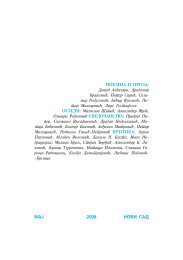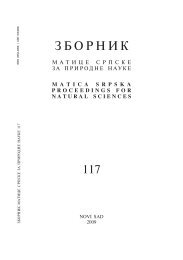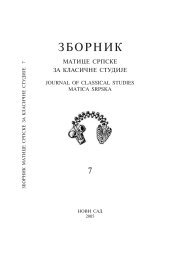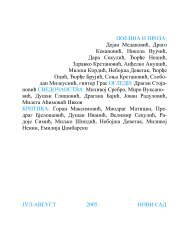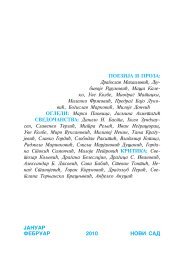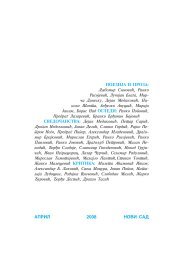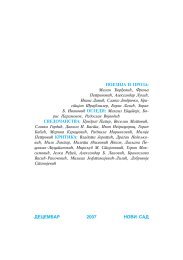Create successful ePaper yourself
Turn your PDF publications into a flip-book with our unique Google optimized e-Paper software.
with Pythagoras and his followers. As a corollary to the belief in<br />
after-life, there is the desire to communicate with the departed. It<br />
has been thought that they can protect, bless, curse or even help the<br />
living to perform some of the social functions which they did while<br />
they were alive. Thus, the duty of the living towards the dead has<br />
been a regular affair. The ritual of their propitiation has been sometimes<br />
daily, at other times held on marked days like the Anthesteria,<br />
or it has been observed on personal dates like the sraddha in pitripaksha.<br />
6<br />
In the lives of Indo-Europeans the presence of ancestors was a<br />
continuous reality. If the body is looked upon as not the only but<br />
just one of manifestation of being, then the non-corporeal manifestation<br />
of existence, called the eidolon or sukshma sharira, can be<br />
present in space and time which are not material. The ancestors in<br />
this way can possess the same quality as gods do, namely, that of<br />
being free of clock-time and earthly space. They can, like the gods,<br />
be invoked to assist, bless or interfere in the daily affairs of men.<br />
They are endowed with semi-godhood which while offering protection<br />
can also promote cohesion in the family, phratry and genos or<br />
gotra. 7 As compared with the divine the relationship between the<br />
individual and the pitris is more intimate and emotionally strong as<br />
it is a conversion of a once very worldly attachment into an other-<br />
-worldly bond. In ancient drama this feeling for ancestors is more<br />
extensively depicted than the relationship between man and Divine.<br />
In Greek drama burial rituals and worship at tombs become a<br />
part of the dramatic action itself. Such instances are rare in Indian<br />
plays. Libations of water by Yudhishthira to supposedly dead brothers<br />
in 'Venisamhara' are an exception. in the Greek tragic muthoi<br />
the frequency of thanatological ritual on stage is accounted for by<br />
the culture pattern of desecration and prevention of burial. It was<br />
not simply war vendetta which encouraged desecration but a faith<br />
that the prevention of rites of passage shall weaken the opponent<br />
and his successors. 8 On the contrary, in India antyeshti has been<br />
considered to be too sacred to be disturbed. The dying man is regarded<br />
as beyond the pale of animosity and there is the culture pattern<br />
of even seeking his advice. Bhishma's death-sermon epitomises<br />
this norm. When depicted in drama this pattern also promotes a<br />
peacefulness lessening of the pangs of horror. It was under this spirit<br />
that the dying hero of Bhasa's 'Urubhanga' is made to give up<br />
his life-long hatred for Pandavas. On the other hand in the Greek<br />
tragic world horror is intensified by the victor's demand for ransom<br />
for desecrated body of the vanquished. The fury of the desecrater is<br />
a mark of his heroic wrath and the plaint of the relatives of the<br />
157




